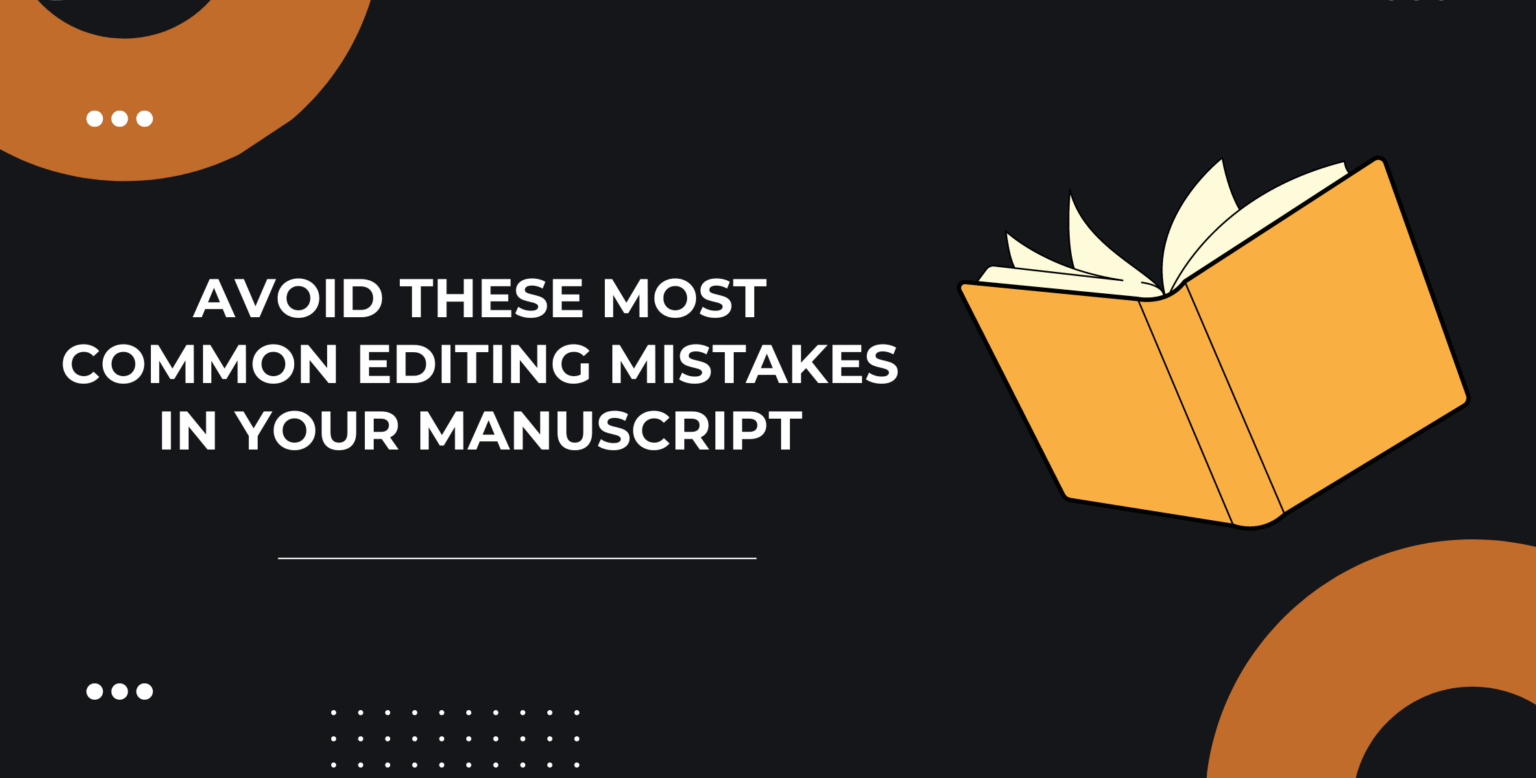- Blog
Common Editing Mistakes to Avoid in Your Manuscript

Your manuscript—the culmination of your blood, sweat, and tears poured onto countless pages—is poised to captivate the world. But before you hit that “publish” button or send your masterpiece off to agents, pause for a moment.
Lurking among those brilliant words are hidden foes: book editing mistakes. These sneaky saboteurs can snatch away your credibility, confuse your readers, and ultimately leave your publishing dreams in tatters. Fear not, fellow wordsmiths! Today, we’ll arm you with the knowledge to defeat these most common editing mistakes in your manuscript, ensuring it shines brighter and better at the end.
1. Grammatical Errors:
Let’s face it—grammar isn’t everyone’s cup of tea. But even the most creative minds need a handle on the basics to avoid confusing readers and raising eyebrows (not in a good way). Here are some common grammar mistakes you should watch out for:
Misused Words and Homophones:
They’re, Their, There: This pesky trio can trip up even the best of us.
Remember:
- “They’re” is a contraction of “they are.”
- “Their” indicates possession.
- “There” refers to a location.
Affect vs. Effect:
- “Affect” describes an influence.
- “Effect” is the result.
Mastering these homophones can instantly boost your manuscript’s credibility.
2. Irresponsible use of Commas:
Commas, those tiny punctuation marks, can pack a big punch.
- Overuse them, and your sentences become breathless marathons.
- Underuse them, and readers might get lost in labyrinthine clauses.
Befriend comma placement rules and remember:
- They separate independent clauses,
- And prevent ambiguity.
- Set off introductory phrases,
A well-placed comma can elevate your writing from “run-on mess” to “elegant prose.”
3. Stumbling Upon Sentence Structures:
Run-on sentences: These are like marathons without water breaks, which are exhausting for the readers.
Sentence fragments: On the other hand, they are like cliffhangers without resolution, which leaves readers stranded.
- Aim for a variety of sentence lengths and structures to keep your writing engaging and clear.
- Strong verbs and an active voice go a long way in crafting powerful sentences.
Let’s discuss each in more detail:
4. Messed-up Punctuations:
Punctuation may seem like a mere sprinkle of symbols, but they’re the silent conductors of your writing’s orchestra. If you get them wrong, the music turns into cacophony. Here are some common punctuation mistakes to avoid:
Struggling to put Semicolon:
- Don’t use it to show off – master its purpose and wield it wisely.
- Strong verbs and an active voice go a long way in crafting powerful sentences.
Colon Usage:
- Colons introduce appositives (explanations that rename something) or lists.
- But only use them after independent clauses if introducing a quotation or formal statement.
- Remember, they’re not interchangeable with semicolons – each has its distinct role.
Apostrophe Rules:
- Possessive nouns get an apostrophe (e.g., “dog’s bone”), and contractions do too (e.g., “it’s,” “they’re”)
- But plural nouns (e.g., “dogs’ bones”) and non-possessive pronouns (e.g., “its”) don’t.
- Master the apostrophe’s power and banish confusion from your manuscript.
5. Consistency Catastrophes: Jargon and overly technical terms:
Inconsistency is the arch-nemesis of reader immersion.
For example, your hero’s hair color changes every chapter, or the villain’s motivations shift like desert sands.
Inconsistency, one of the most common editing mistakes in a manuscript, jars readers out of the story and raises questions about your attention to detail. Here are some key areas to ensure consistency:
Character names and place names:
Double-check every mention. A typo here or there can make your world feel sloppy and break the reader’s trust.
The Choppy Sentence Syndrome:
Imagine encountering a series of short, disconnected sentences—like stepping stones precariously placed across a rushing stream. While each stone might be sturdy enough, the constant hopping becomes tiring and hinders your progress.
- To combat this, embrace the power of transitions and sentence variety.
- Transitions like “however,” “moreover,” or “meanwhile” act as bridges, guiding readers smoothly between ideas.
- Varying sentence length also adds rhythm and prevents monotony.
- Consider blending short, punchy sentences for action scenes and longer, descriptive ones for setting the mood.
Tenses Gone Rogue:
- Sticking to one tense (past or present) is crucial for narrative flow. Shifts should be intentional and purposeful, not accidental jumps that disorient readers.
- Remember, consistency is the glue that holds your story together. Polish your prose, maintain coherence, and ensure your manuscript flows like a crystal-clear river.
- Quick turnaround
6. Conquering Flow Flaws:
Crafting a captivating narrative involves more than ticking boxes. It’s about understanding your story’s rhythm, anticipating reader expectations, and creating prose that carries them on a captivating journey. Here’s how you can avoid these most common editing mistakes in the manuscript’s flow:
Read Aloud: Practice makes perfect. Read your work aloud to identify clunky sentences, awkward phrasing, and pacing issues. Adjust accordingly.
Seek Feedback: Trusted readers can provide valuable insights. Let them highlight areas where the flow stumbles or where clarity is lacking.
Experiment: Try different techniques. Vary sentence lengths, use transitions, and find the right balance between action and reflection.
Switching soon between Point-of-view:
- Choose a first, second, or third person and stick with it. Head-hopping (switching POVs within scenes) can create confusion and undermine the emotional connection with your characters.
Pacing Problems- Balancing the Thrill of Ride:
- Picture a rollercoaster—exhilarating bursts of adrenaline punctuated by moments of anticipation and reflection.
- Similarly, your narrative should balance fast-paced action with quieter moments.
- Please don’t rush through every scene; allow readers to catch their breath and absorb the impact.
Soon, your story will flow effortlessly, leaving readers breathless and begging for more.
7. Word Choice and Writing Techniques Mistakes:
Words are your paint brushes, and your manuscript is the canvas. However, using the wrong colors can create a tacky mess instead of a masterpiece. Here are some common word choice mistakes to avoid:
Weak or Overused Language: Relying on clichés or tired expressions can leave readers unmoved. Dig deeper for fresh, evocative language.
Clichés: Banish them! Instead of “fit as a fiddle,” find a unique way to convey robust health.
Overused Expressions: Replace generic phrases with specific, vivid descriptions. Show the reader the scene; don’t just tell them about it.
Unleashing the Power of Action:
Verbs are the engines of your sentences, driving the plot forward and bringing characters to life.
But weak verbs like “is,” “was,” and “has” leave your writing feeling sluggish.
Instead, wield strong verbs that crackle with energy:
Specificity: Instead of “He walked,” consider “He strode,” “He lumbered,” or “He tiptoed.” These choices paint a clear picture of the action and keep readers glued to the page.
Remember, every word matters. Choose wisely, and your prose will resonate with readers, leaving them hungry for more.
8. Showing is Better Than Telling:
Have you ever encountered a paragraph overflowing with exposition, feeling more like a history lecture than a captivating story? This, my friends, is the dreaded info dump—a surefire way to stall your narrative and send readers scrambling for the escape button.
But fear not! Just a little magic you need to avoid this most common editing mistake in a manuscript, and the magic lies in “showing” rather than “telling.”
Immersive Descriptions:
- Instead of stating your character’s sadness outright, describe their slumped posture and trembling lip.
- Let readers feel the weight of their emotions through actions and body language.
- When introducing the intricate political system of your world, weave it into the character’s dialogue or actions.
- Let readers discover the nuances organically as if they’re exploring alongside your characters.
Engaging the Five Senses:
Imagine reading a scene filled with vibrant details that tantalize your senses. You smell the salty air, feel the sun-warmed sand beneath your feet, and hear the crashing waves. This, dear reader, is the magic of sensory details.
- You transport your reader directly into the scene by incorporating specific sights, sounds, smells, tastes, and textures, allowing them to experience it alongside your characters.
- Don’t just tell us your character is scared; describe their pounding heart, the tremor in their hands, the goosebumps prickling their skin.
- This visceral connection elevates your writing from mere words to a full-fledged sensory experience.
Showcasing Character Traits Through Deeds:
We all judge people by their actions, and so do our readers. Instead of telling us your character is brave, describe them:
- Show their courage through selfless acts.
- Reveal their kindness through small gestures.
- Unveil their flaws through mistakes and decisions.
Remember, “showing, not telling” is an ongoing practice, not a rigid rule. Experiment with different techniques, find the balance that works for your story, and, most importantly, trust your creativity. Craft a narrative that resonates by immersing readers in sights, sounds, and emotions.
Conquer the Quill and Publish with Confidence
Congratulations, wordsmiths! You’ve faced the most common editing mistakes in the manuscript and honed your manuscript into a powerful narrative. But before hitting publish, let’s take a final victory lap, ensuring your story confidently launches.
Remember the Key Takeaways:
- 1. Grammar and punctuation: Master the basics; they are the foundation of clear and professional writing.
- 2. Consistency: Keep your characters, names, and timelines consistent to avoid confusing readers.
- 3. Flow: Craft smooth transitions, vary the sentence length and pace your story for a captivating reading experience.
- 4. Word choice: Banish clichés, utilize strong verbs, and paint vivid pictures with sensory details,
- 5. Show, don’t tell: Immerse your readers through action, dialogue, and sensory details.
Join us for the final installment of this blog post, where we’ll wrap up with actionable tips and encourage you to share your writing journey.
If you find this blog informative and want to know more about book editing, check out this blogs on Master The Art Of Book Editing.
Additional Actionable Editing Tips to Avoid Editing Mistakes in Book Publishing:
Here are additional actionable editing tips to avoid common mistakes in book publishing:
Read Your Manuscript Aloud:
Reading your work aloud helps identify clunky sentences, pacing issues, and awkward phrasing. It allows you to catch nuances that might be missed during silent reading.
Seek Feedback from Trusted Readers:
Gather diverse perspectives by sharing your manuscript with beta readers, friends, and writing partners. “Their insights can help identify areas that need improvement and offer new perspectives.”
Utilize Proofreading Tools:
While automated tools can catch typos and grammatical errors, remember that human judgment is crucial. Use tools as a starting point, but constantly review manually.
Format Professionally:
Proper formatting enhances readability and professionalism. Pay attention to consistent font styles, margins, chapter headings, and layout elements.
Research Publishing Options:
Understand the various publishing routes: traditional, self-publishing, or hybrid. Each has its pros and cons. Choose what aligns best with your goals and story.
Share Your Journey:
Join a community of writers to share experiences and ask questions. Collaboration and support are invaluable.
Conquer the Publishing World:
Remember, this is just the beginning. Keep learning, practicing, and letting your creative voice shine. The world awaits your stories.
Final Notes:
This series provides a strong foundation for editing your manuscript. Every genre and story has nuances, so tailor your editing approach accordingly.
As you gain experience, you’ll develop your own editing style and techniques.
Never stop learning and evolving as a writer. Embrace the journey, enjoy the process, and share your stories with the world.
This comprehensive blog empowers you to edit your manuscript’s most common editing mistakes and confidently publish your work.
Contact Us To Know More And Experience A Smooth Book Editng Process.

We are an expert ghostwriting team that takes your imagination, adds a thing or two, and turns it into a successful book.